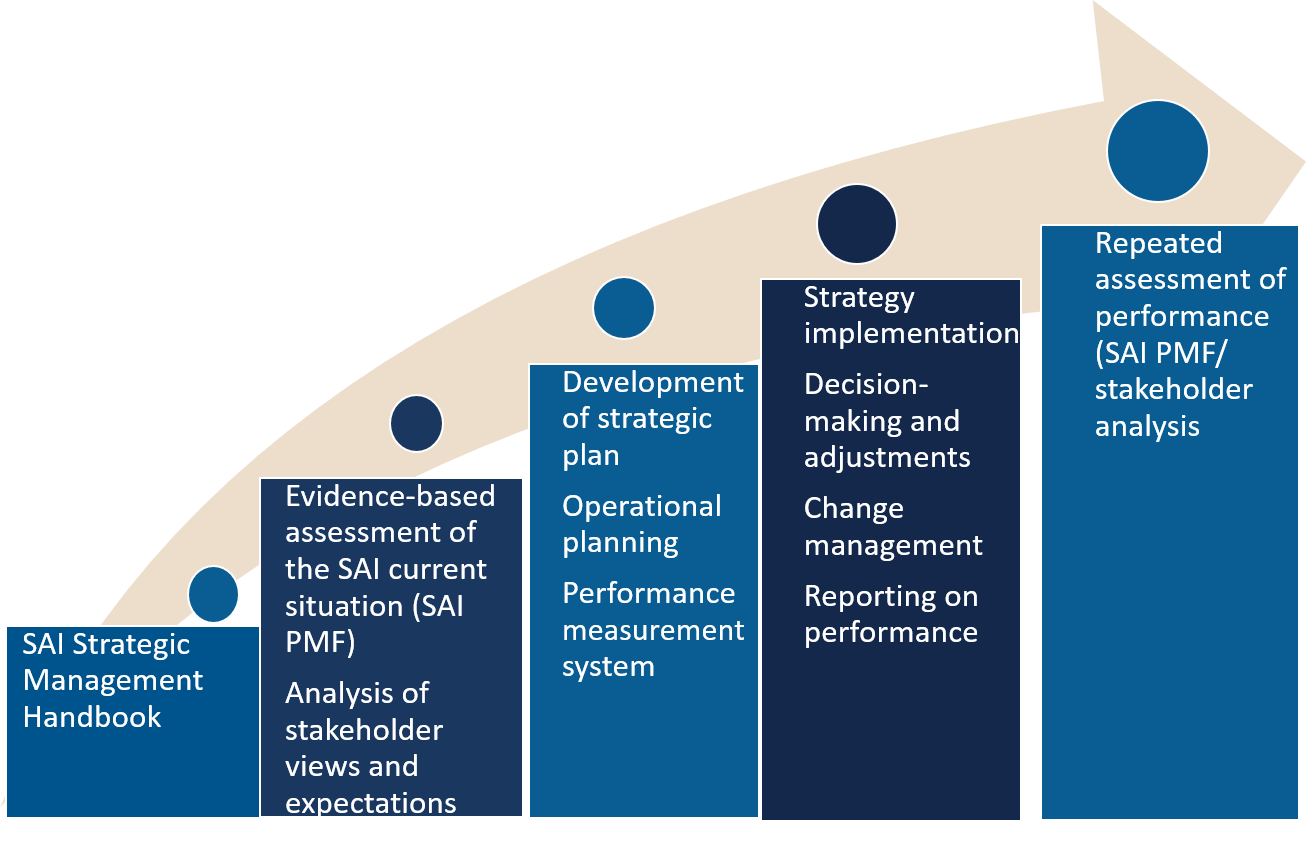About IDI
Our Cross-Cutting Priorities
Our Results
Meet the IDI Board
IDI's Board is composed of ten members from different supreme audit institutions. Get to know them better in our "Meet the Board" series.

The initiative’s global objective is to have strategically managed SAIs and INTOSAI regions that deliver better results, ensure higher value and benefit positively the lives of citizens
Strategic management is of fundamental importance for SAIs in their strive to deliver value and benefits to the lives of citizens. INTOSAI P-12 emphasises that SAIs must lead by example among public institutions. The added value of a SAI will also depend on how it plans and carries out its functions, ensures its own good governance and strives for service excellence and quality. This requires strong processes for assessing, planning, implementing, monitoring and reporting on SAI performance.
Global data on SAI performance reveals the need for a shift in focus from strategic planning to strategic management. Between 2010 and 2017, the share of SAIs with strategic and operational plans increased to over 80%. However, only 28% of the SAIs in developing countries had a high-quality strategic planning cycle, which links strategic, operational and performance targets to plans of action and resource allocation. The 2017 INTOSAI Global Survey showed that monitoring and reporting on performance is another weak area for a significant number of SAIs.
Consequently, there is a substantial potential for providing support to SAIs in linking strategic planning, operational planning, navigating implementation, performance measurement and reporting on performance. In light of this, in 2018 IDI launched its Strategy, Performance Measurement and Reporting (SPMR) in initiative to provide holistic support to SAIs throughout the whole strategic management cycle.
The experiences of the piloting and first years of implementation of SPMR have led to the development of the SAI Strategic Management Handbook - a comprehensive resource for SAIs that guides them through the key elements of the strategic management process. The handbook also covers topics such as change management, leadership, risk management and communication.

There are four main delivery modes:
The cycle of the initiative is as follows – there are seven workshops and the remaining modes of delivery take place in between the workshops.